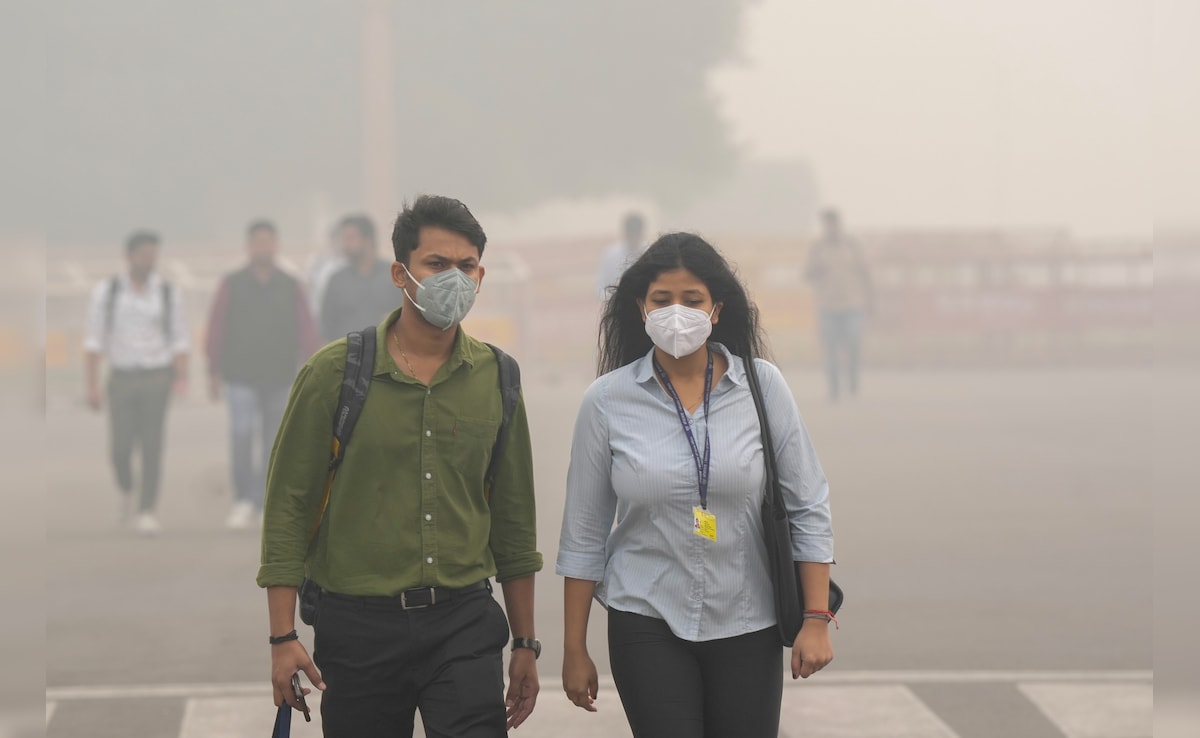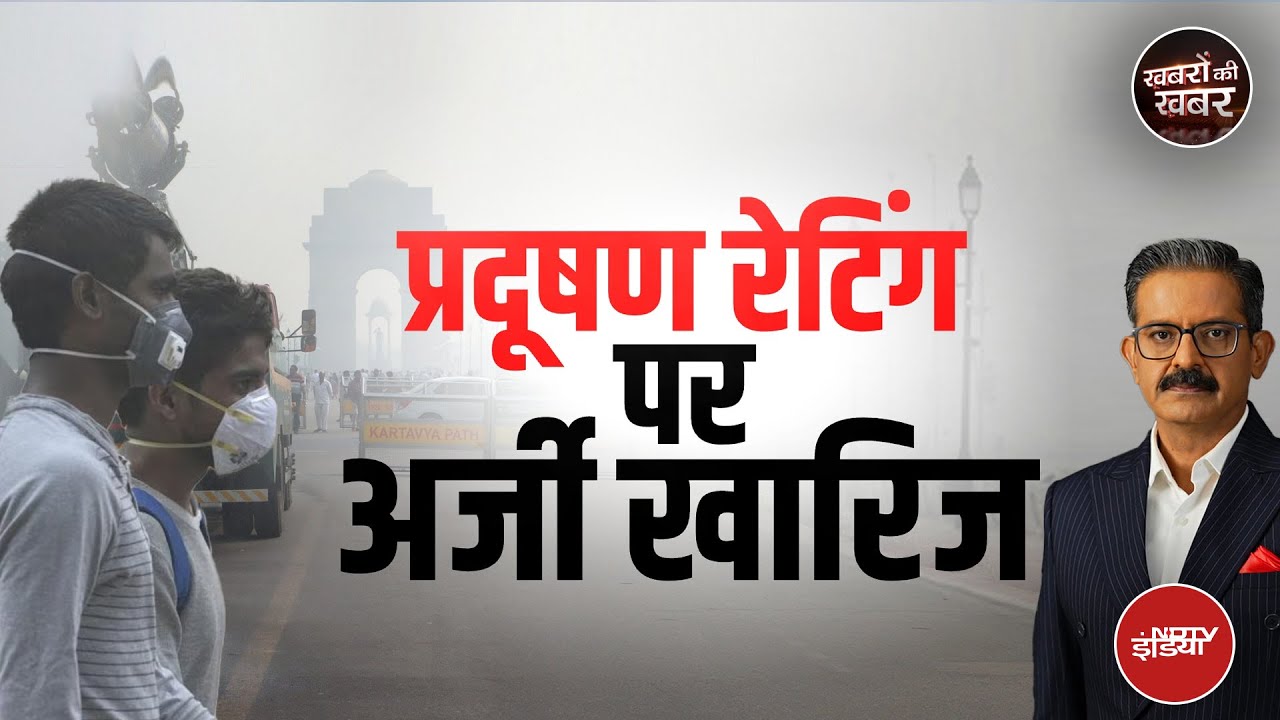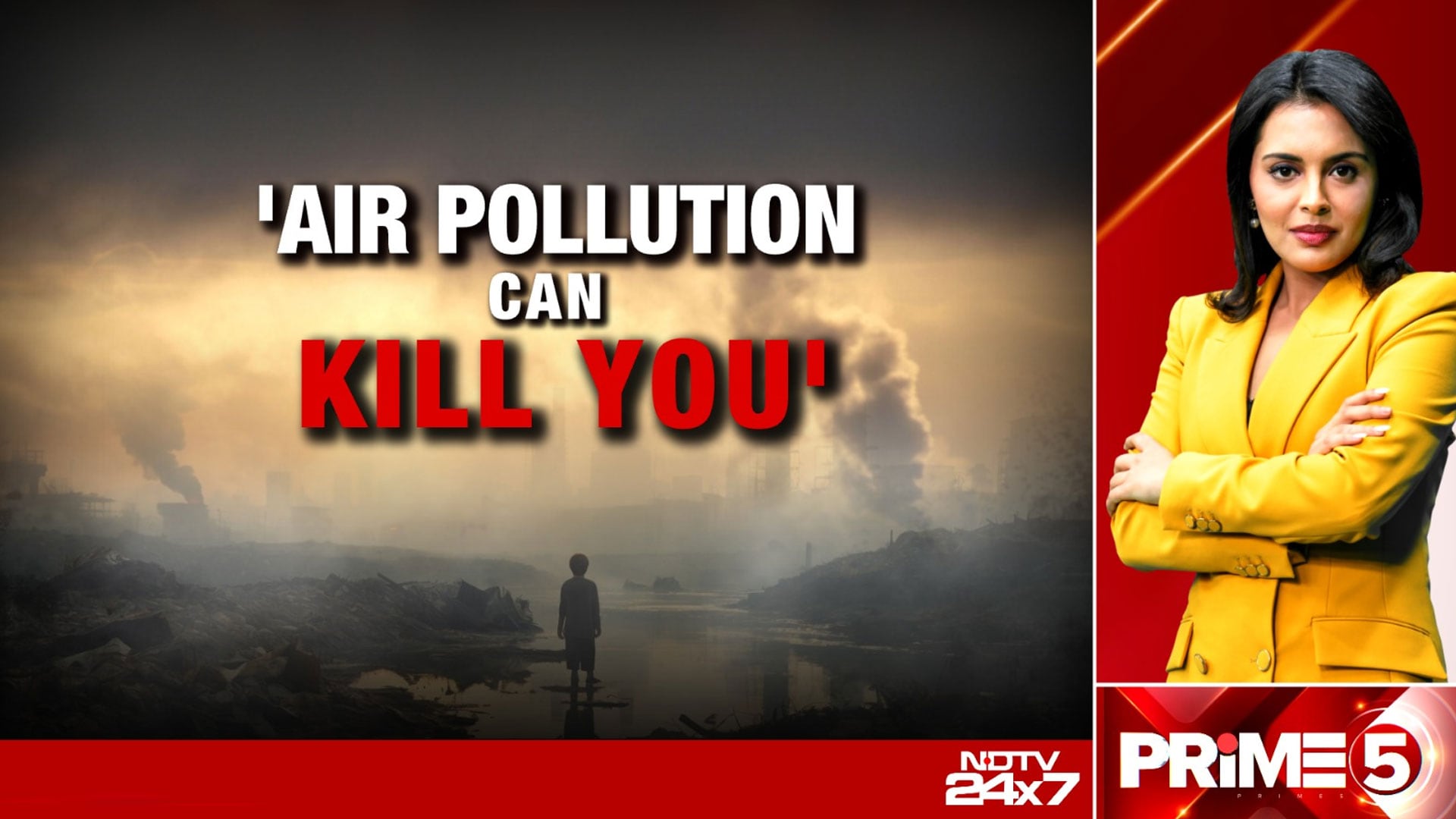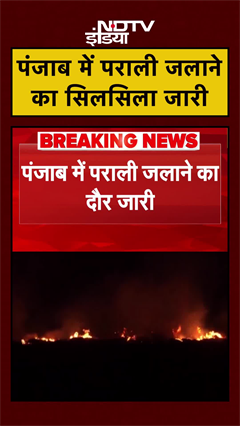- Home/
- 1.5 Million Deaths Between 2009-2019 Linked To Air Pollution In India: Report
1.5 Million Deaths Between 2009-2019 Linked To Air Pollution In India: Report

About a million and a half deaths every year from 2009 to 2019 are potentially linked to long-term exposure to PM2.5 pollution, according to a study published in The Lancet Planetary Health journal.
Researchers, including those at Ashoka University, Haryana, and Centre for Chronic Disease Control, New Delhi, said that the entire 1.4 billion population of India live in areas having PM2.5 levels higher than World Health Organisation-recommended five micrograms per cubic metre yearly average.
The team also found that nearly 82 per cent of India's population, or 1.1 billion, lived in areas with yearly average PM2.5 levels exceeding those recommended by the Indian National Ambient Air Quality Standards (40 microns per cubic metre).
Fine particulate matter, or PM2.5, pollution is caused by particles sized under 2.5 microns in diameter.
A yearly increase in PM2.5 pollution of 10 microns per cubic metre was associated with 8.6 per cent higher annual mortality, the researchers found.
For the study, the authors looked at yearly deaths from 2009 to 2019 at a district level across India and obtained annual PM2.5 concentrations, using data from satellite and over a 1,000 ground-monitoring stations. Deaths data was taken from the Civil Registration System.
The team said that evidence on long-term exposure to air pollution and deaths in India is scarce and inconsistent with studies from other countries.
Exposure to PM2.5 pollution was found to be wide-ranging across the years, with the lowest yearly level noted in Lower Subansiri district, Arunachal Pradesh (11.2 microns per cubic metre) in 2019, and largest yearly level seen in Ghaziabad, Uttar Pradesh, and Delhi (119 microns per cubic metre) in 2016.
(Except for the headline, this story has not been edited by NDTV staff and is published from a syndicated feed.)
also read
From Inhaler To Purifier: How Residents Are Surviving Delhi-NCR's Toxic Air
Reported by Tanushka Dutta, Edited by Akash MajumderDelhi's Air Quality Remains "Very Poor", Light Rain Expected Today
Press Trust of IndiaScientists Monitor Air Quality Of Europe From 36,000km Above Earth, Share First Images
Edited by Srishti Singh Sisodia
Latest Stories
- Reported by Tanushka Dutta, Edited by Akash Majumder | Monday October 27, 2025
Thirty-five-year-old Rekha Sharma, a resident of Nehru Place, leaves for work early in the morning for Noida, masked up and with an inhaler in her bag.
- Press Trust of India | Monday October 27, 2025 , New Delhi
Delhi's air quality remained in the very poor category on Monday even as the weather department forecast a partly cloudy with chances of very light rain towards the evening.
- Edited by Srishti Singh Sisodia | Sunday October 26, 2025
The first images from Sentinel-4 have revealed nitrogen dioxide hotspots over Italy's Po Valley.
- Press Trust of India | Saturday October 25, 2025
Three out of four households in Delhi-NCR are already experiencing the ill-effects of toxic air, with common complaints ranging from sore throat and cough to burning eyes, headaches and disturbed sleep, according to an online survey
- Press Trust of India | Saturday October 25, 2025 , New Delhi
The sudden exposure to smoke, toxic gases, and fine particulate matter has left the elderly, children, pregnant women, and those with chronic respiratory or cardiac illnesses struggling to cope.
................................ Advertisement ................................
Latest Videos
Opinion
Opinion | Why Indians Have Just Given Up On Air Pollution CrisisTanushree Ganguly
Friday December 20, 2024While some may argue that people in Delhi are now more aware of air pollution than they were a decade back, my rebuttal would be that awareness does not mean that people are concerned.
Opinion | You Must Outrage Over Filthy Air More Than Once A YearJyoti Pande Lavakare
Tuesday December 10, 2024Delhi welcomed us with monsoon rains and mangos. We were home. Fast forward a couple of years, in the winter of 2012, I found myself in denial about something other parents, mostly expats, were calling toxic air.
Opinion | Delhi's Air Pollution Situation Is Like A Bad MarriageNishtha Gautam
Friday November 22, 2024On a good day, such as today, the AQI reading in Delhi is 407. We are jubilant at the sickly sunshine trickling through the slightly dissipated smog. At least its not 1600.
दिवाली... पराली... सियासी जुगाली!Ashwini kumar
Monday November 18, 2024दिल्ली-एनसीआर में प्रदूषण का समाधान तो आज तक मिला नहीं. हर साल चिंतित होकर हम-आप सांसों की तकलीफ के साथ-साथ दिल और ब्लड प्रेशर के मरीज भी क्यों बनें?
घर में कैद बुजुर्ग और हांफते लोग, दिल्ली की सांसों में घुला ये कैसा रोग?Nidhi Kulpati
Friday November 08, 2024हमारी हवा जहरीली हो रही है. गुरुवार की शाम को जब मैं इस मुद्दे पर लिखने बैठी तो AQI लगातार 400 पार जाकर दम घोंट रहा था. बहुत लोगों को यह मामला बोरिंग लगे, लेकिन जब आप अपने साथ काम करने वालों को खांसते-हांफते देखते-सुनते हैं, तो चिंता होने लगती है. सुबह उठते ही दरवाजे खिड़कियां खोलने के लिए डॉक्टर मना कर रहे हैं. बड़े बुजुर्गों के लिए तो मॉर्निंग वॉक बाहर की दुनिया से सीधे संपर्क का ज़रिया है, लेकिन डॉक्टर इसकी भी मनाही कर रहे हैं.


















